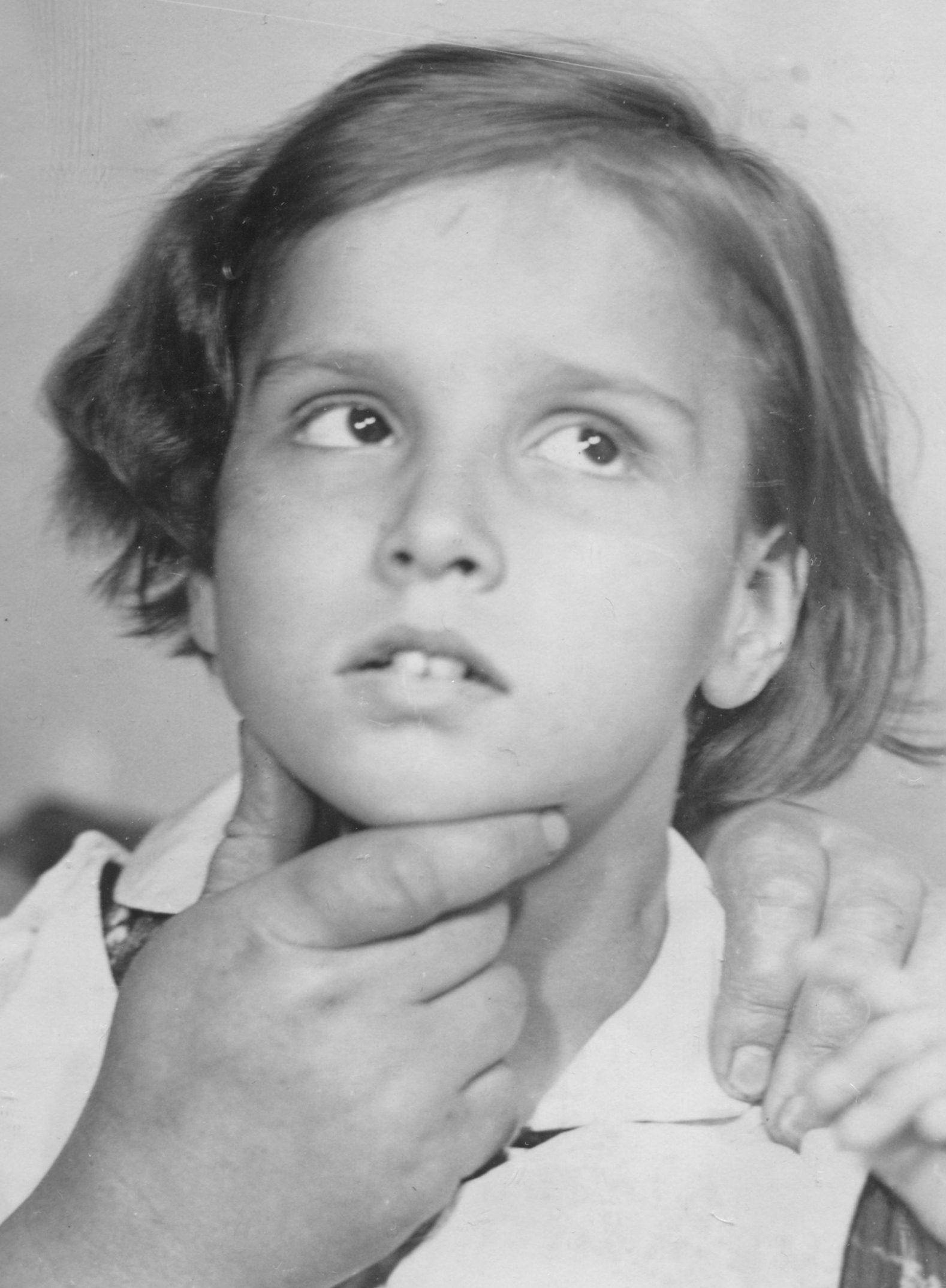Search for Names, Places and Biographies
Already layed Stumbling Stones
Suche
Gerda Ingeborg Hass * 1929
Mittelweg 22/24 (Eimsbüttel, Rotherbaum)
HIER WOHNTE
GERDA INGEBORG
HASS
JG. 1929
EINGEWIESEN 1932
ALSTERDORFER ANSTALTEN
"VERLEGT" 9.3.1943
MESERITZ-OBRAWALDE
ERMORDET 12.4.1943
Gerda Hass, born 12.11.1929 in Altona, admitted to the Alsterdorfer Institutions (Alsterdorf Asylum, now Evangelische Stiftung Alsterdorf) on 7.4.1932, transferred to the Langenhorn sanatorium and nursing home on 9.3.1943, transferred to the Meseritz-Obrawalde sanatorium and nursing home on 9.4.1943, died on 23.4.1943
Mittelweg 22-24 (Rotherbaum)
Gerda Hass, born on 12 Nov. 1929 in the then still independent city of Altona, was the eldest child of Wilhelm Hass, a shoemaker, born on 17 Oct. 1902 in Borsfleth near Glückstadt, and his wife Lina Christine Bertha, née Waitz, born on 8 Oct. 1900 in Hamburg. Gerda's parents had married in Hamburg on 20 Apr. 1929. They had five more children by 1938, one of whom is said to have died very young.
The family then lived at Mittelweg 22-24 in the Rotherbaum district.
In February 1932, a doctor in private practice admitted Gerda Hass, who was just over two years old, to the clinic of the Hamburger Säuglingsheim e.V., near Hochallee 1, because of a chronic kidney disease and developmental disorders. The doctors at the clinic diagnosed, as they wrote in the referral to the then Alsterdorf Asylum, "a pronounced idiocy" ("idiocy" is an outdated term and no longer used today for a severe form of intelligence impairment). It was probably also noticeable that Gerda Hass also made swaying movements in bed and, when she walked by someone's hand, bent both knees.
Gerda Hass was admitted to the Alsterdorf Asylum on 7 Apr. 1932. In July 1932, the institution's physician, Gerhard Kreyenberg, noted that Gerda Hass was suffering from a considerable degree of feeble-mindedness (the term "feeble-mindedness", which is no longer used today, referred to a reduction in intelligence or a congenital weakness of intelligence). She was dependent in personal hygiene, cried a lot, was very difficult to treat, and was often hitting her head with her fist. She was difficult to keep clean, could not walk well, did not speak, did not get along well with her fellow pupils, and required constant supervision.
This assessment was repeated in the following years. According to the patient's file, during the winter of 1939/1940 Gerda Hass was strapped in bed daily or was largely restricted in her movements by a protective jacket (colloquially known as a "straitjacket"), because she had banged her head against her bed, walls and table, causing her to bleed.
In the summer of 1941, Gerda was said to have behaved quietly, to have enjoyed playing with toys in the garden, and to have been cheerful. For the period from autumn 1941 onwards, the patient's file again shows the initial pattern of behavior. At the beginning of 1943, Gerhard Kreyenberg even imputed deliberate negative character traits to the girl: " She intentionally throws pots with contents under the beds and jumps with glee and pleasure when others scold and get angry. She is also happy when other children are punished."
Gerda Hass was transferred to the Langenhorn Sanatorium and Nursing Home on 9 March 1943, along with at least seven other female residents. NSDAP and SA member Kreyenberg noted on that day that Gerda Hass suffered from idiocy, showed a strong destructive instinct, screamed a lot and shrieked, and was uninfluenceable. The transfer to Langenhorn was necessary. There, the resident physician Saupe essentially repeated these assessments.
One month after her transfer to the Langenhorn sanatorium, Gerda Hass was transported on 9 Apr. 1943 together with 49 other patients to the Meseritz-Obrawalde sanatorium in what was then the province of Brandenburg (now Poland).
This institution had become part of the decentralized "Euthanasia" in 1942. Immediately after the patients' arrival, the medical staff decided on the basis of their physical condition whether someone was to be put to death immediately or had to work first, e. g. in the gardening or sewing workshop. Those who were no longer able to work were given drugs which led to death.
Gerda Hass died three days after her departure from Langenhorn on 12 Apr. 1943 in Meseritz-Obrawalde, according to the entry in the patient's file of "pneumonia."
It can be assumed as certain that Gerda Hass died a violent death.
Translation: Elisabeth Wendland
Stand: December 2022
© Ingo Wille
Quellen: StaH 332-5 Standesämter 13205 Heiratsregister Nr. 233 Wilhelm Hass/Lina Christine Bertha Waitz, 352-8/7 Staatskrankenanstalt Langenhorn Abl. 1995/1 Nr. 31308 Gerda Hass; Evangelische Stiftung Alsterdorf, Archiv, Patientenakte V 263 (Gerda Hass). Michael Wunder, Die Transporte in die Heil- und Pflegeanstalt Meseritz-Obrawalde, in: Peter von Rönn u.a., Wege in den Tod, Hamburgs Anstalt Langenhorn und die Euthanasie in der Zeit des Nationalsozialismus, Hamburg 1993, S. 377 ff.


